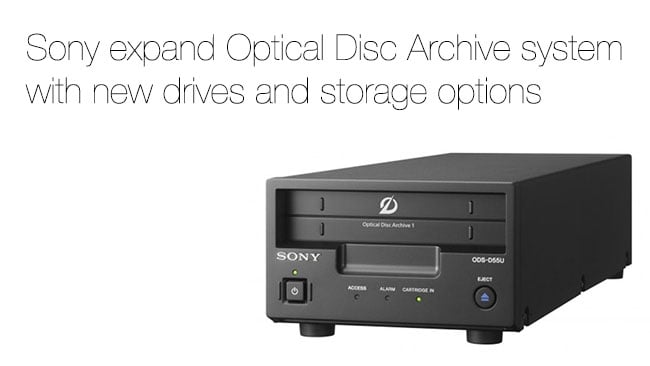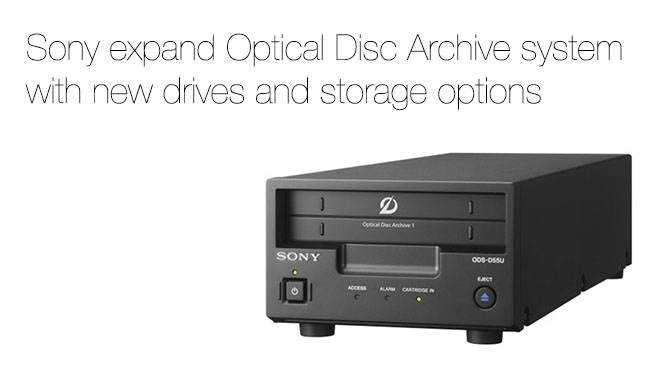
 Sony Optical Disc Archive
Sony Optical Disc Archive
Following on from my recent article about archiving, Sony is expanding its Optical Disc Archive system with faster drives and new robot systems enabling Petabytes of storage
Last year Sony launched a range of products that may answer some of the issues associated with archiving to LTO tape or Hard drives. The ODS-D55U was the first in a family of Optical disc archive solutions that use cartridges containing rewritable Blu-ray discs, with each cartridge holding 12 discs, but when they are loaded the computer sees them as a single large volume. Cartridges currently come in sizes up to 1.2TB for rewritable disks or 1.5TB for write once discs. The system has the benefit of random access, so recovering files from different locations on the cartridge should be faster than LTO. Also, because the data is written to the disc optically rather than magnetically the expected lifespan of the data is 50 years and it is resistant to humidity, dust and water.
Range Expansion
This year Sony is expanding the range with the ODS-D77U, an updated version of the ODS-D55U with read and write speeds that are twice as fast, allowing data to be written at up to 420Mbps and read at 660Mbps. Both the ODS-D55U and the ODS-D77U can be used stand alone, connected to a PC or Mac via USB3. There are also fibre channel variants which can be fitted in a robotic library unit to provide automatic access to multiple cartridges.
The system comes with a software package to manage the content of the archive; Sony's "Content Manager" software controls transferring media to the cartridges and has a very clean and visual interface.
Each cartridge has a built in RFID tag so the drives automatically know which cartridge is loaded, you can also print labels with QR codes to allow external systems to read the information. Content Manager generates proxies of the media and stores them locally, so you can browse the content of the archive without having the cartridge loaded. The UI is completely browser based so I expect that this will be opened up to support multiple users.
The software also has a couple of interesting tricks up its sleeve which are not enabled in version one but are expected soon. The first is speech transcription; when media with dialogue is loaded into the system the software will transcribe the speech to a searchable text file which can then be used to search the archive. Very interesting for tracking down quotes and soundbites and it will work with different languages. The second interesting function is facial recognition; if you give the system three sample images of someone's face it will scan the archive and find content that matches that person, this could be very useful for documentary, current affairs or reality type programmes.
Sony will be demonstrating the Optical Disc Archive system on their stand at IBC next month.
Tags: Technology


Comments